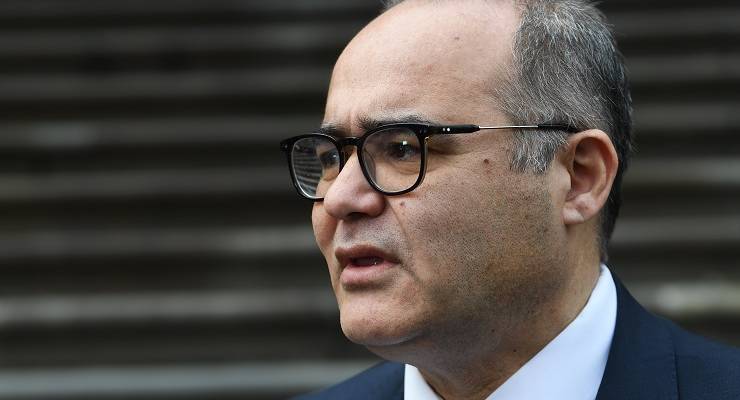
The ALP’s powerful national executive is expected to meet today or tomorrow to decide on the best way to deal with the Adem Somyurek “stackathon” allegations within the Victorian organisation.
The scandal claimed a third scalp on Tuesday when cabinet minister Marlene Kairouz resigned.
Labor’s national body has the job of investigating the claims and making sure Somyurek can never rejoin the party.
But who or what is the national executive, and what tools does it have to investigate branch-stacking?
And more importantly, can we expect it to introduce changes that would stamp out corruption and trigger widespread cultural change?
Enforcing decisions
The ALP’s national executive is its chief administrative body which meets three times a year. It’s made up of several non-voting members — including Labor leader Anthony Albanese, national president Wayne Swan, and national vice-presidents Mark Butler and Mich-Elle Myers — and 20 voting members elected by the national conference.
Its main job is to carry out the decisions made at national conferences. It also can intervene in a state branch or section.
In the past when scandals like this have occurred, the executive has ordered an independent review or investigation as part of an “intervention” into the branch.
Intervention powers
An intervention occurs when the national executive intervenes in the affairs of a state branch. Under the ALP constitution, this allows the national executive to “take over and direct” its conduct.
An intervention into the New South Wales branch occurred last year after revelations at ICAC that the branch accepted $100,000 in banned developer donations from Chinese billionaire Huang Xiangmo.
The national executive intervened to ask former attorney-general Michael Lavarch to lead a review into the scandal-plagued branch.
The review recommended structural reforms which Albanese ultimately endorsed, including bans on the NSW general secretary from seeking elected office for five years, and setting up an audit and risk committee.
The national executive is likely to call for a similar review into the Victorian branch, with former Victorian premier Steve Bracks and former federal minister Jenny Macklin among those being considered.
Suspension and audit
An intervention could also involve a suspension of the branch, meaning the national executive would conduct any preselection that would have been decided by the state branch or section.
The national executive could also call for an audit of memberships. It is less clear how an audit would work, given roughly 4000 out of 16,000 of Victoria’s members have been stacked by various powerbrokers over several years, according to some estimates.
Conducting an audit is much more politically risky than a review with recommendations, given that cancelling false memberships would destabilise factions and potentially trigger power vacuums in the branch.








Given that most of us do not belong to a major political party and therefore have absolutely no say in who gets selected why should we worry about branch stacking? The further up the chain the more “stacking” there is. Witness the election of slowmo to the leadership of the liberals and therefore to Prime Minister. I like many others find it amusing that the media (including your illustrious commentators) and the politicos get their knickers is such a twist over something that is built in to the parliamentary democracy we have.
I think you will find that the parliamentary leader IS a voting member. Correction needed.
The national executive has been intervening in state branches for all of my 60 years of living memory. It is not new. Journalists don’t seem to understand anything about how the ALP works but love to pontificate on it. The ALP structure is markedly different from the LNP and Liberal Party structures. The Green party seems to be more like the LNP. The ALP is one organisation federally with state branches which perform state functions. These state branches have different rules from each other and different structures and operate autonomously most of the time. They are all subject to intervention from the federal executive. Internal state structures are based on democratic representation. People are always elected to many positions by an internal democratic ballot. The Shepherdson Inquiry in Queensland resulted in party reform which made branch stacking almost impossible. Factions have to operate within all of these boundaries.